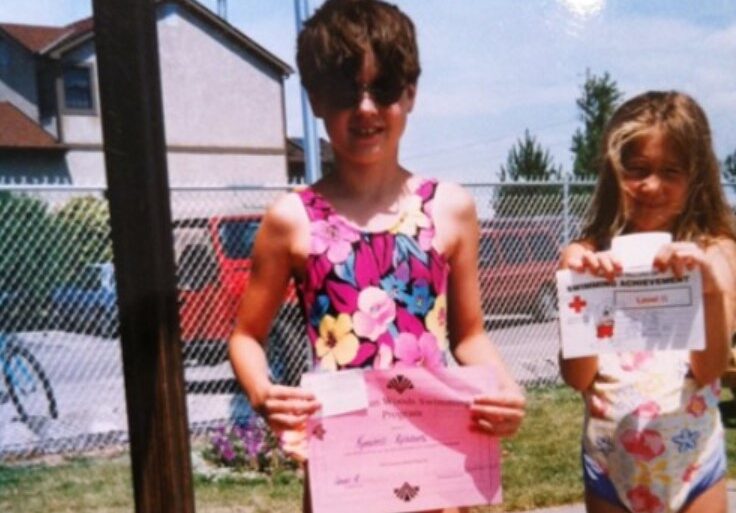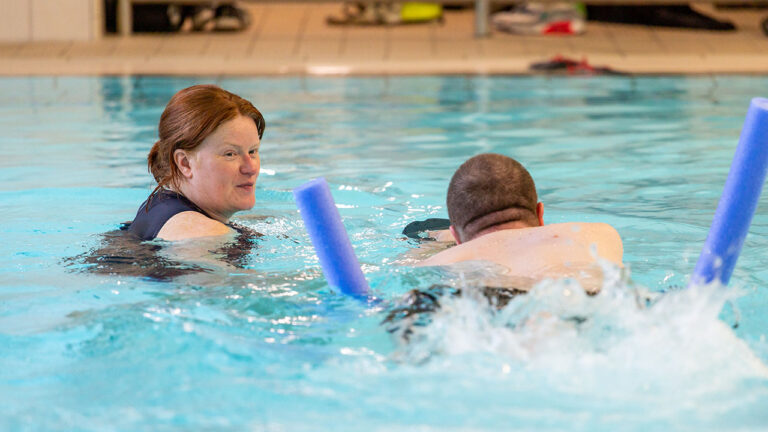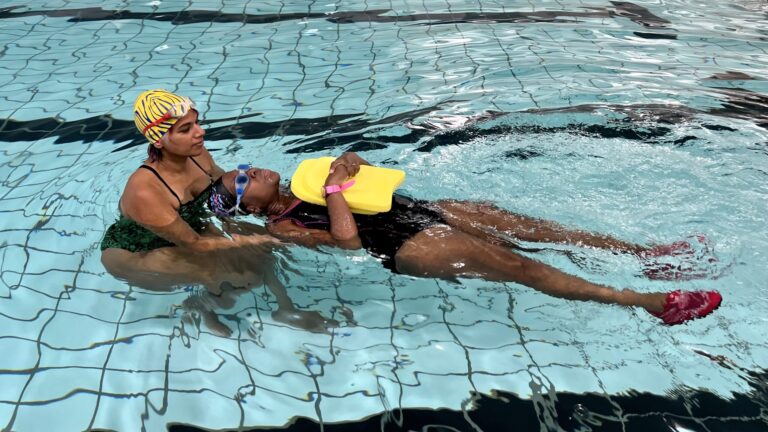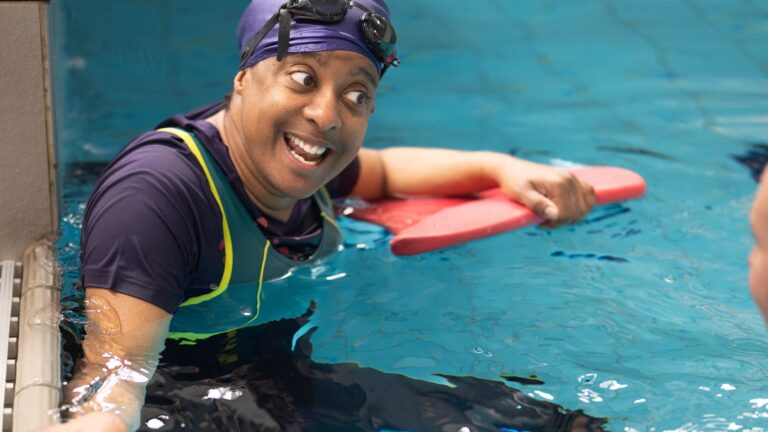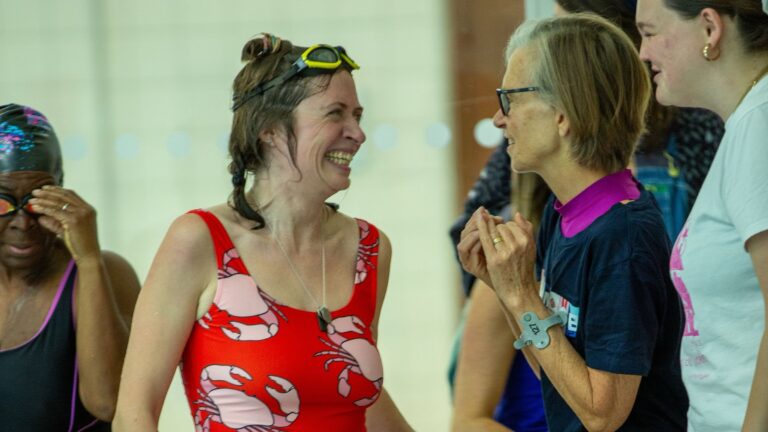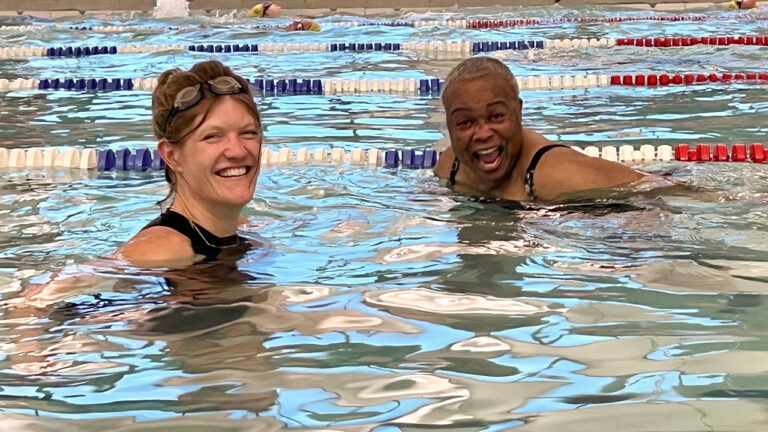We’ll soon start the WeSwim club sessions again and we have recruited new volunteers to support our swimmers. This week, one of them, named Kendall, shares her story about how she got involved with WeSwim.
Hi, I Am Kendall!
That’s me and my sister in the pool, when I was 11 years old.
I live in London now but I am originally from the United States. I grew up in a culture where I’d spend all the long summer days at swim practice or I’d go to the pool and hang out, talk to friends, and meet with family. At school, I was a competitive swimmer and worked as a children’s swimming instructor.
My Experience with Disability
I was diagnosed at 29 with Hypermobile Ehlers-Danlos Syndrome (EDS), a genetic connective tissue disorder. Connective tissues are the building blocks of your body, supporting your skin, blood vessels, organs, muscles, tendons, ligaments and bones. If those building blocks are faulty or weak, they can cause widespread issues, such as unstable joints, chronic musculoskeletal pain, dysautonomia, gastrointestinal and cardiovascular dysfunction, and anxiety disorders – just to name a few.
As my symptoms became more limiting, I began to understand more and more how the world is just not designed for all people. I worked on cultural projects relating to design and architecture and had been involved in disability arts. Through this work, I had first encountered the Social Model of Disability, which considers how people with impairments are disabled by barriers created by society. This includes physical barriers, such as how public spaces like swimming pools are designed to allow everyone access, and social barriers, such as stigma around who should be in a space.
Swimming is widely recommended for the management of EDS, joint conditions and chronic pain, and yet I find barriers have made it difficult for me to do in London. I didn’t have the energy to get to the pool after work, and when I did, they were always crowded. There never seemed to be space to take it easy, go at my own pace and just enjoy the water or relax poolside. These experiences have brought up all sorts of feelings of inadequacy and even fears of going swimming, this thing that I’d always loved and was so good for my health.
Why I Volunteer for WeSwim
I was in a hospital waiting for an appointment with a pain therapist when I saw a poster seeking volunteers for WeSwim. I had never heard of a disability swim club, and it felt serendipitous: when I looked into WeSwim, I knew it was for me. I have all these skills from the years I spent swimming and teaching swimming as a young person. I can empathise with the barriers that stop someone from getting into a pool, but also, I see how swimming can build a community. I have wonderful memories of my grandma taking me to the pool for the day, and we would just talk and play. In this way, swimming isn’t just about improving physical health – it can provide holistic wellbeing. I’m so excited to be a part of We Swim and to help build a community that breaks down barriers around swimming.
Thank you Kendall for sharing your story, we’re really happy to have you as part of the WeSwim volunteers and look forward to meeting you in person!
